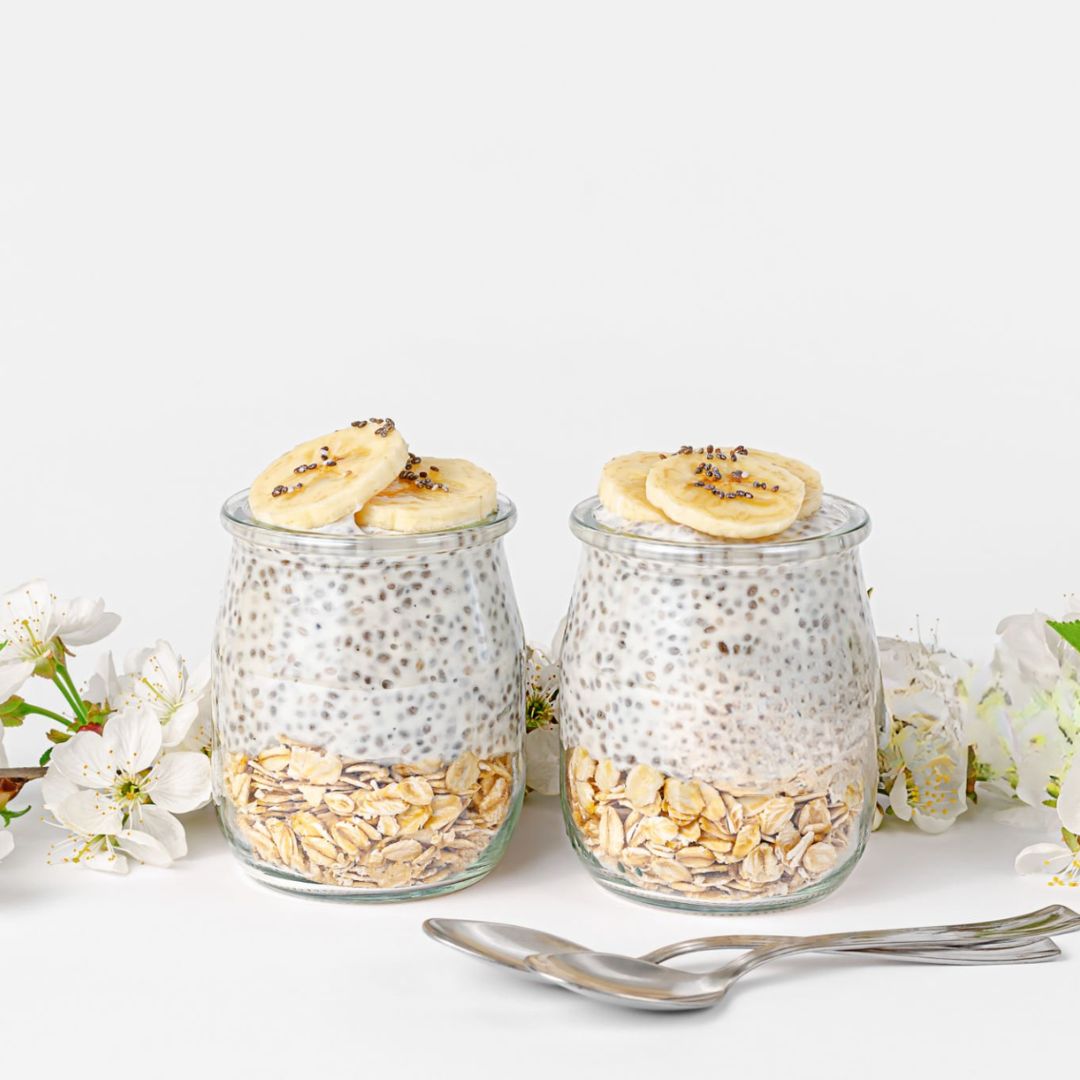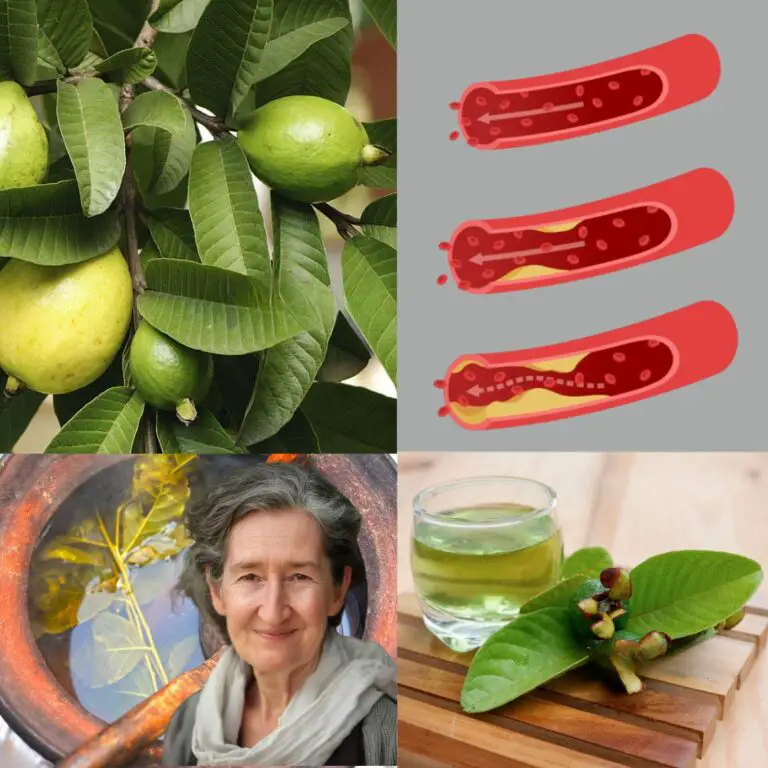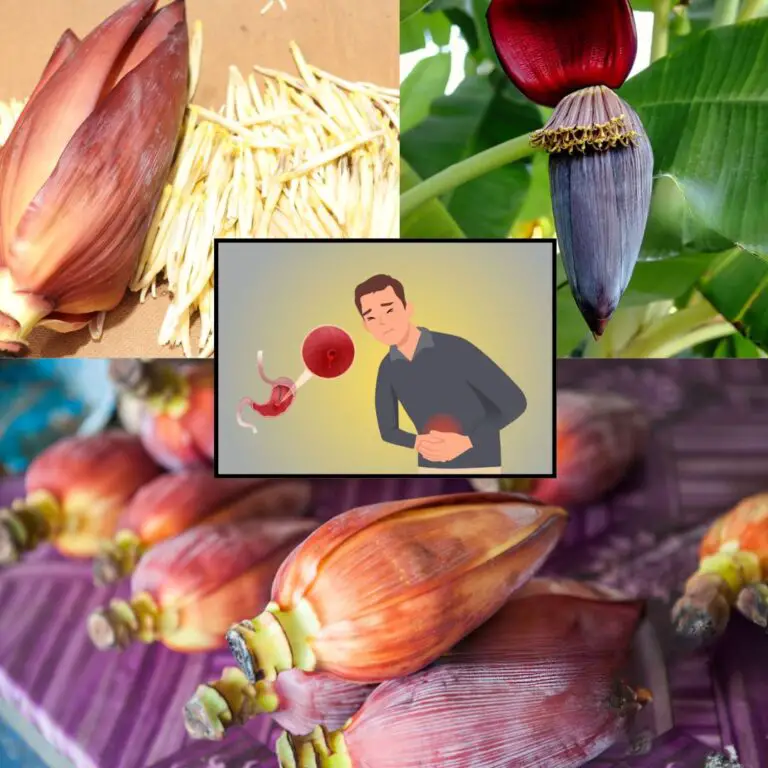Say Goodbye to Diabetes, High Blood Pressure, and Stomach Pain with Just One Natural Remedy You Never Expected: Banana Blossom — Health Benefits, Recipes, and Uses
Introduction
In the modern world, chronic illnesses like diabetes, high blood pressure, and digestive discomfort have become alarmingly common, affecting millions globally. While medications and therapies are available, many people seek natural, holistic alternatives to support their health without side effects. What if we told you there’s a simple, natural remedy that’s been hiding in plain sight — the humble banana blossom?
Banana blossom, also known as banana flower, is the large, purple flower that grows at the end of a banana cluster. Though it’s a staple in many Southeast Asian and Indian cuisines, it remains relatively unknown in other parts of the world. This natural superfood boasts remarkable health benefits, especially for conditions like diabetes, hypertension, and stomach ailments.
This blog post explores how banana blossom can be a game-changer for your health. We’ll dive deep into its nutritional profile, medicinal properties, and even share delicious, easy-to-make recipes that let you incorporate this miracle ingredient into your diet seamlessly. Say goodbye to chronic ailments and hello to natural healing with banana blossom.
Why You’ll Love This Recipe and Banana Blossom’s Unique Appeal
Banana blossom isn’t just another leafy vegetable. Its unique combination of taste, texture, and powerful health benefits make it a standout ingredient in your wellness journey. Why should you incorporate banana blossom into your diet?
Natural Blood Sugar Regulator
The fiber-rich banana blossom helps slow glucose absorption and improve insulin sensitivity. For people with diabetes or those at risk, this means better blood sugar control with a natural food.
Heart Health Booster
Banana blossom contains potassium and antioxidants that help lower blood pressure and reduce oxidative stress, which are key factors in preventing heart disease.
Soothes Digestive Issues
Its high dietary fiber content supports digestion and alleviates symptoms like bloating, constipation, and stomach pain. It also contains anti-inflammatory compounds that calm the gut lining.
Low-Calorie Nutrient Powerhouse
Banana blossom is packed with vitamins (A, C, E), minerals (iron, calcium, potassium), and antioxidants, all while being low in calories. It’s perfect for weight management and overall vitality.
Versatile Culinary Ingredient
From salads to stews, banana blossom adapts well to various cooking styles. Its slightly nutty flavor and crisp texture make it a refreshing addition to meals.
With these benefits, it’s no surprise that banana blossom is gaining popularity as a natural remedy and superfood. Now, let’s take a closer look at a simple, nourishing recipe that helps you enjoy banana blossom every day.
Ingredients for Banana Blossom Salad Recipe
Before we jump into preparation, here’s a clear list of ingredients for a fresh, healthy banana blossom salad that can aid in managing diabetes, high blood pressure, and digestive issues:
- 1 medium fresh banana blossom (outer tough layers removed, inner petals thinly sliced)
- 1/3 head of cabbage, finely shredded
- 1 large carrot, julienned or grated
- 1 fresh cucumber, thinly sliced or julienned
- 1 red onion, thinly sliced into rings
- Juice of 1 lemon (helps reduce bitterness and adds flavor)
- 2 tablespoons extra virgin olive oil or coconut oil
- Salt to taste
- Fresh coriander or mint leaves (optional for garnish)
Necessary Tools for Preparation
To prepare this banana blossom salad and get the most out of its flavors and benefits, having the right tools on hand will make the process smooth and enjoyable:
- A sharp chef’s knife and sturdy cutting board for precise slicing
- Large mixing bowl to toss ingredients together evenly
- Citrus juicer or lemon squeezer to extract fresh lemon juice
- Colander or salad spinner for washing and draining vegetables
- Grater or mandoline slicer for julienning vegetables finely
- Salad servers or large spoons for mixing and serving
These simple kitchen tools will ensure your preparation is efficient and your salad perfectly textured.
Ingredient Swaps and Additions
Flexibility is key when it comes to healthy eating, and banana blossom salad is no exception. Feel free to customize the recipe based on your preferences or ingredient availability.
- Banana Blossom Substitute: If you can’t find fresh banana blossom, try artichoke hearts or finely chopped purple cabbage as alternatives with similar texture and fiber content.
- Vegetable Variations: Add crunchy bell peppers, tomatoes, or snap peas to boost vitamins and color.
- Protein Enhancers: Incorporate boiled chickpeas, lentils, tofu, or grilled chicken for a more filling dish.
- Dressing Alternatives: Experiment with tamarind paste or apple cider vinegar instead of lemon juice for different tangy notes.
- Spices & Herbs: Add a pinch of cumin, chili flakes, or turmeric powder for enhanced flavor and health benefits.
These swaps keep the recipe fresh and adaptable to different dietary needs or taste buds.
Step-by-Step Instructions for Preparing Banana Blossom Salad
Step 1: Prepare the Banana Blossom
Start by peeling away the tough, outer layers of the banana blossom until you reach the tender, purple inner petals. Thinly slice these petals and immediately soak them in lemon water for 15–20 minutes. This step prevents browning and removes any bitterness. Rinse and drain well afterward.
Step 2: Prep the Vegetables
Wash and dry the cabbage, carrot, cucumber, and red onion. Shred or julienne the cabbage and carrot finely, slice the cucumber and onion thinly. Combine all these vegetables in a large mixing bowl.
Step 3: Mix Banana Blossom with Vegetables
Drain the banana blossom slices and add them to the bowl with the other vegetables. Toss gently to mix evenly.
Step 4: Make the Dressing
In a small bowl, whisk together the lemon juice, olive or coconut oil, and salt until well combined.
Step 5: Dress the Salad
Pour the dressing over the salad ingredients and toss gently to coat everything evenly.
Step 6: Garnish and Serve
Top with fresh coriander or mint leaves for a refreshing burst of flavor. Serve immediately to enjoy the crispness and freshness of the salad.
Pro Tips for Success
- Choose Fresh Banana Blossom: Select blossoms that are firm and deep purple in color for the best taste and nutrients. Avoid those that appear dry or yellowed.
- Soak Well: Always soak the sliced banana blossom in lemon water to remove bitterness and prevent discoloration.
- Cut Uniformly: Ensure all vegetables are sliced or julienned evenly for balanced texture and presentation.
- Dress Just Before Serving: To maintain the salad’s crunch, add the dressing right before serving.
- Enhance Flavor: A sprinkle of black pepper or a dash of chili flakes can enhance the taste while adding health benefits.
Serving Suggestions
Banana blossom salad is a refreshing side or main dish that pairs well with many meals:
- Serve alongside grilled fish, chicken, or tofu for a balanced, nutrient-packed meal.
- Add it to rice bowls or quinoa dishes to add fiber and flavor.
- Use it as a crunchy filling for wraps or sandwiches.
- Enjoy it chilled as a light lunch on hot days.
- Pair it with a bowl of lentil or vegetable soup for a wholesome, satisfying dinner.
Storing and Reheating
For optimal taste and texture, banana blossom salad is best consumed fresh. However, if you have leftovers:
- Store the salad in an airtight container in the refrigerator for up to 24 hours.
- Keep the dressing separate if possible and add it before serving to avoid sogginess.
- Since this dish is best eaten cold, reheating is not recommended.
Nutritional Information (Approximate per serving)
- Calories: 160
- Dietary Fiber: 9 grams
- Protein: 3 grams
- Vitamin A: High (from carrot and banana blossom)
- Vitamin C: High (from lemon and cabbage)
- Potassium: Supports blood pressure regulation
- Healthy fats: Provided by olive or coconut oil
- Antioxidants: Rich content to combat oxidative stress and inflammation
FAQs About Banana Blossom and This Recipe
1. Can banana blossom really help control diabetes?
Yes. Its high fiber content slows glucose absorption, and compounds in banana blossom improve insulin sensitivity, aiding blood sugar regulation.
2. How does banana blossom help with high blood pressure?
Banana blossom is rich in potassium and antioxidants, which relax blood vessels and reduce oxidative stress, lowering hypertension.
3. Is banana blossom safe for daily consumption?
Absolutely. It is a nutritious vegetable safe for regular inclusion in your diet.
4. How do I identify fresh banana blossom?
Look for firm, deep purple petals. Avoid those with yellowing or dryness.
5. Can I cook banana blossom instead of eating it raw?
Yes. Banana blossom is delicious in cooked dishes like stir-fries and curries, which can reduce bitterness.
Conclusion
Banana blossom is a nutritional powerhouse and a natural remedy that addresses some of the most common and challenging health issues: diabetes, high blood pressure, and stomach pain. Incorporating banana blossom into your meals is a delicious, simple way to harness its health benefits. This salad recipe offers a fresh, crunchy, and flavorful introduction to this superfood that anyone can enjoy.
Start your journey towards better health by trying this banana blossom salad today — a natural, easy, and tasty step towards saying goodbye to chronic ailments!







